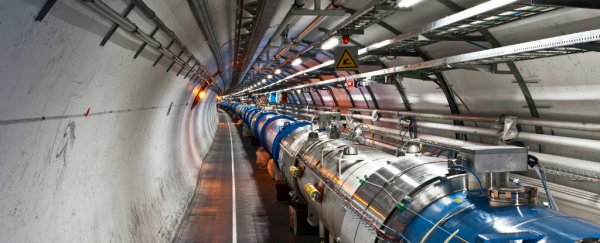China has announced that it will begin construction of the world's largest particle collider in 2020. According to officials, the subterranean facility will be at least twice the size of the Large Hadron Collider (LHC) in Switzerland, and will endeavour to find out more about the mysterious Higgs boson.
The final concept design won't be completed until the end of next year, so we don't have many details to go on, but the collider is expected to smash protons and electrons together at seven times the energy levels of the LHC, generating millions of Higgs bosons in the process. Best of all, the facility will reportedly be available to the entire global scientific community.
"This is a machine for the world and by the world: not a Chinese one," Wang Yifang, director of the Institute of High Energy Physics at the China Academy of Sciences, told the government-controlled publication, China Daily, this week.
In recent years, China has been making a concerted effort to revamp its reputation for dodgy science. As well as trying to encourage its researchers to produce more quality, open-access journal articles, the government has also started funding research into theoretical science, in addition to focussing solely on practical projects.
That's where the Higgs boson comes in - scientists believe that the elusive particle gives other particles mass, and as such, is a fundamental building block of the Universe. But there's still much that we don't understand about how it works and what it does, and China hopes that the new particle collider will help answer some of those questions.
Particle accelerators such as the LHC work by accelerating electrons or protons close to the speed of light in opposing directions through an incredibly cold tunnel, until they eventually smash into each other. That collision destroys the original particles are creates strange and rare new types of radiation and particles that can help physicists understand how the Universe works.
With its 27-km long tunnel, the LHC at CERN has been capable of producing around 1.2 million Higgs boson particles per year - enough to allow their scientists to discover the particle back in 2012, but not enough to study it in detail. But thanks to several upgrades planned before 2025, CERN officials claim that it could generate up to 15 million of the Higgs bosons per year.
Still, China thinks that they can outdo this with their proposed device. Apparently it's been in the works since 2013, and will serve as the next step in particle colliders.
"LHC is hitting its limits of energy level," said Yifang. "It seems not possible to escalate the energy dramatically at the existing facility."
Although no location or completion date is set for the project, Yifang suggested Qinghuangdao, a northern port city that's the starting point of the Great Wall of China, as a potential home.
Seeing as the only real news of this new facility has come out of a government-run media outlet, we're remaining a little skeptical for now. But the growing population and economy of China makes it a pretty ideal spot to build one of the next super-science facilities of the future.
Let's just hope the Chinese government will cooperate with other physicists from around the world and pull off their ambitious plans for the collider, because we're already imagining all the potential discoveries.
